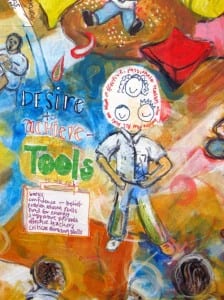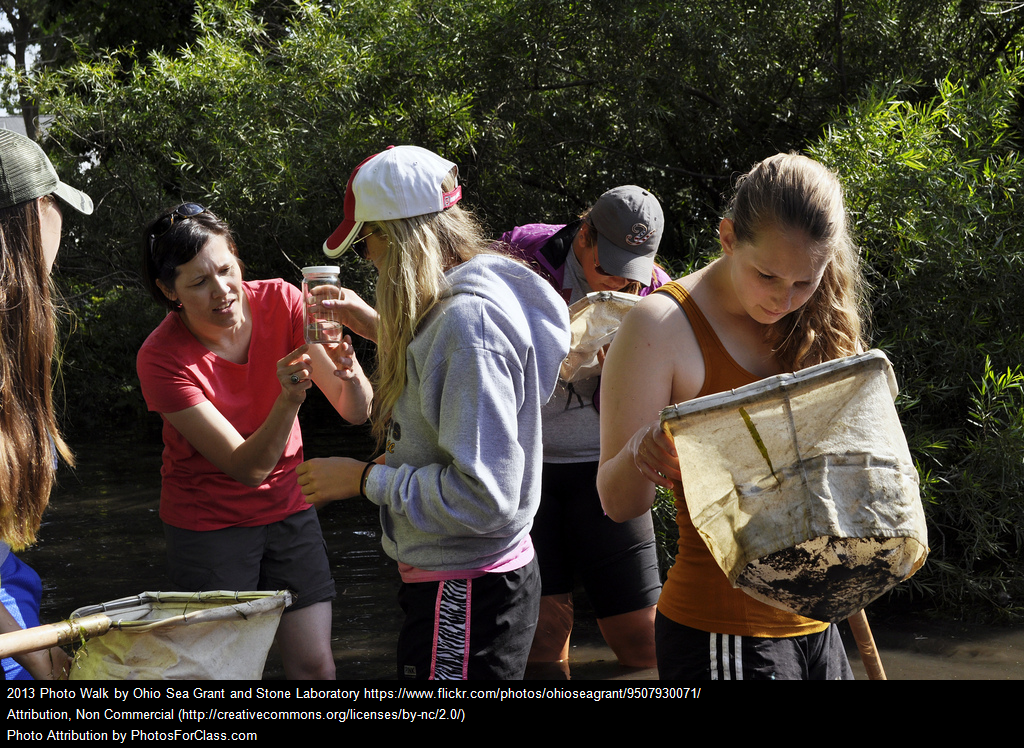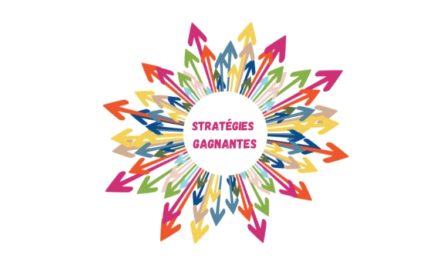A few weeks ago, I had lunch with a group of educators, among them a pair of Cycle One teachers from the francophone sector. We got to talking about a series of learning and evaluation situations that we had been asked to review and possibly work on. One of the required components of the LESs was the “phase d’objectivation” which I’m guessing is the equivalent of a reflection phase in English (although the definition specifically deals with making the abstract concrete). Every LES designed had to have a reflective activity built into it.
“You know,” one of the teachers said to me quietly over coffee, “nobody actually does that”.
“You mean reflect with their students at the end of an LES” I asked, sort of puzzled.
“Yes, exactly” she replied. “There just isn’t the time. And the kids don’t really understand what it is. Everyone just wants to move on.”
The other teacher nodded in agreement. And there you had it: reflection swept neatly under the rug with all the other things we’re supposed to do as educators but don’t quite get there…
This exchange has stayed with me. Far be it from me to judge individual teachers. We all live with our own shifting classroom and school realities and in this day and age, there is no room for judgement. The teachers I spoke with surely are not the only ones who feel this way about the reflection phase of an LES. They were speaking with the conviction of those who feel the disconnect between that which they should do and that which actually happens, and who don’t see any way around it except to nod and smile. We were talking about reflection, but it could have been one of any number of sound pedagogical approaches, such as critical literacy or goal setting or authentic assessment.
This is where things get a little “Choose your own adventure”. On the one hand, I want to write about how teachers might come to embrace a proven approach (or fail to do so) and on the other hand, I want to show those two teachers I spoke with and all the others who don’t reflect with their students how they might begin in Cycle One and what it might look like. I’m going to do both eventually, but this post is about reflection for teachers.
“But I would not feel so all alone…”
Reflection is for everyone. In my work with dancers who are also dance teachers with no formal background in education, I have seen firsthand the power of reflection on action, and the subsequent new learning that emerges from it. We use social media mostly, but also meet face to face every session, which is every six weeks. Sometimes I organize the discussion by giving it a framework and other times I just facilitate and make links between ideas. I can see this process taking place in a school. What I’m trying to say is this: teachers who believe that reflecting with their students is a waste of time have probably not experienced the power of reflection in their own practice, in spite of its pervasiveness in education literature.
As a professional, actively reflecting on one’s work is called ‘reflective practice‘, a term popularized by Donald Schön‘s work some decades ago and increasingly relevant to practitioners today. Schön, drawing upon Dewey, defined reflective practice as “the capacity to reflect on action so as to engage in a process of continuous learning”. Duh, right? His basic premise, and that of other scholars who took up the reflective practice baton, is that being able to reflect on professional actions ultimately leads to improvements on these actions. A continuous cycle of learning and, eventually, innovation. Teachers, like their students, can benefit from reflecting on what they do, using whatever lens matters to them most, and following a scaffolded process of action-reflection-action. This article from Educational Leadership expands on this idea of reflective practice as a means of professional development. With a constantly shifting political landscape, and a changing and increasingly diverse population to contend with, it makes sense that the most effective professional development initiatives would be those in which the teachers themselves would play the most active decision-making role.
Just to be clear, reflective practice is not a fluffy “let’s sit down and talk about our feelings” kind of process. It is rigorous in that it takes on the thorny issues of practice in the field and forces participants to examine their actions, beliefs and patterns. It asks participants to identify precisely those areas that make them uncomfortable, the ones in which they feel a lack or a conflict. I can hear some of you now: “Yes, but what if teachers don’t choose the RIGHT thing on which to focus??” Ah, and now we come to the crux of the matter.
Trust and Time
I believe that the reasons reflective practice is not yet the dominant professional development paradigm for teachers can be summed up in two words: trust and time. On the one hand, there is a legacy of paternalism and hierarchy still at work with regards to professional learning initiatives. Teachers are given choices, yes, but these choices are often limited to traditional classroom-style ways of learning. What is missing is trust – trust that teachers will make the right decisions for their practice and trust that they will follow through with self-driven modes of learning such as reflective practice or action research. Luckily, in Quebec there have long been initiatives like the PDIG grants and other grants are available today. Unfortunately, these are not the norm for all practitioners and writing them yearly is no mean feat. Ideally, everyone should have regular and ready access to such approaches (facilitated or not) and a professional portfolio model could be used to provide an accountability framework for teachers engaged in self-driven modes of professional learning.
The thing about these pesky self-driven, iterative, process-based forms of professional development is that they take time. Gobs and gobs of it. Thankfully, the experimentation and active learning required of teachers actually take place in the classroom, on the job. Still, reflective practice requires a consistent time commitment and preferably a community of peers with whom to share ideas and insights. Currently, only a skilled and creative administrator committed to carving out more time for teachers can find the necessary resources to do so.
What can you do?
If you want to engage in reflective practice, find a community. Professional communities online abound. LEARN has communities you can join, organized by Subject Area or interest (animation, portfolio). If going online is not your thing, look in your school or approach fellow teachers you like and trust. If you are a principal, you can engage your whole staff in process-based professional development, with the help of an outside facilitator, or on your own.
Perhaps you are engaged in reflective practice and have a community of peers. If so, I would love to hear about it.
For more on reflective practice
Osterman, K. F., & Kottkamp, R. B. (1993). Rethinking Professional Development. Reflective practice for educators: improving schooling through professional development. Newbury Park, Calif.: Corwin Press.
Costa, A. L., & Kallick, B. (2000). Getting into the Habit of Reflection. Educational Leadership, 57 (7). Retrieved March 10, 2012, from http://www.ascd.org/publications/educational-leadership/apr00/vol57/num07/Getting-into-the-Habit-of-Reflection.aspx
Finding Time for Professional Development – BetterTeacher.org
Stephie’s professional practice course – A sample reflective blog from a pre-service teacher.
Schön, D. A. (1987). Educating the Reflective practitioner. San Francisco: Jossey-Bass Publishers. (available from on-line booksellers)






I really enjoyed this article. It spoke to a lot of my own frustration with not having enough time for reflection, for my students while going through the programs, but also for myself as a teacher. I also agreed that the system doesn’t’ trust teachers to really explore pedagogically. I can’t really respond to that, as I tend to function outside of the system whenever possible (sometimes too much, I know!), but I did try a process of self-reflection this year that worked for me at least. Basically I just started by setting myself up a space for it to happen, in my case a blogging space just for me and my peers (if they want) to scratch out thoughts on what worked and what didn’t. What I liked about this approach, though it might be less rigorous than you describe, was that it didn’t require any regularity. Some weeks I wrote a lot, could leave it for a month, and then come back and it was there for me to use to gather more thoughts and examine where I have been and where I was going. I am not sure that is enough for students, who need the structure within the learning situation itself to grasp their own specific progress, but just setting up your own space for self-reflection to happen can be a good starting point for teachers.
I’m glad you raised this topic. I have found reflection of my own practice a key aspect that has enabled me to question and (hopefully) improve my work. What made that possible was through blogging and sharing on online communities of practice. Getting feedback and further reflections from other practitioners was a form of encouragement for me to continue writing. Like Paul, I was not always regular at writing/reflecting, but I found it was easier to commit to reflecting around specific learning events (like a workshop) or particular topics (such as human rights in the curriculum).
Getting teachers to appreciate reflection of their own work is indeed a challenge for the trust and time constraints you mention. It’s not for everyone, and despite different frameworks offering ways to reflect on teachers’ work, I found that asking 3 questions – what? (what’s new or what’s worth writing about), so what? (what does it mean for me as a teacher? for the students?) and now what? (how will I change/improve/do something different in the way I teach?) have worked quite well.
Paul
Hi Paul,
Thanks for providing a framework for reflective practice. I like this particular framework for its simplicity. It’s basically portable once you memorize the three questions!
For those who are interested, these three questions (What? So what? Now what?) have also been discussed by Rolfe et al. here:
Rolfe, G., Freshwater, D., Jasper, M. (2001) (eds.) Critical Reflection for Nursing and the Helping Professions. Basingstoke, U.K: Palgrave. ISBN 0333777956. pp. 26 et seq., p. 35
I am an unrepentent workaholic. When I hear anyone say they have no time or they are simply exhausted, my immediate reaction is both visceral and aggressive. And no time to reflect? Seriously now! William Topaz McGonagall (d. 1902) was the worst poet to have ever been published. One commentator quite appropriately wrote that by combining a minimum feel for the English language with a total lack of self-awareness and nil powers of observation, he became a poet. Is this how one becomes a teacher? I did not know where I was headed so I became a teacher? Reflection is a critical component of intellectual growth. Where am I? How did I get here? Failure to reflect, not once a month, or twice a year, but continuously and honestly condemns one to live like an amoeba responding to stimuli only as it encounters it. Keeping a journal used to be a part of my classroom practice…for myself and my students. Years later I still look at what I wrote and I learn about myself, how I am changing, my strengths and my weaknesses. How can one be a teacher and not be fully self-aware? How can one be a teacher and not promote this practice among students? Our curriculum here in Quebec has incorporated reflection as an integral part of the learning process. If teachers are so preoccupied with completing the content component of the course, they should also interested in developing those skills which will serve their students long after the students have forgotten the irrelevant factoids they are spoon-fed.
Not enough time? I don’t buy it at all.
What a great blog! Got my blood boiling and the grey matter sparking. This is what a blog should do, make you stop and reflect. I can do this all by myself, or with my online colleagues. I can do this on a Saturday afternoon when the spring sun is shining, or late at night. I can do this any time.